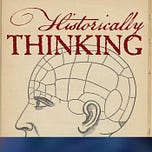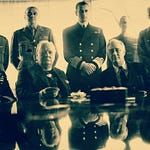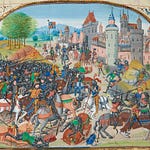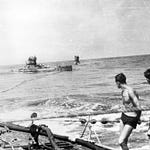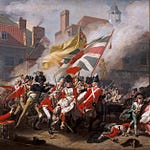Published on November 26, 2025 (Episode 434)
Introduction
On October 16, 1843, William Rowan Hamilton was walking with his wife Helen, heading toward a meeting of the Royal Irish Academy. As he crossed Broome Bridge over the Royal Canal in Dublin, the solution to a longstanding mathematical puzzle erupted into his mind. Afraid he might forget it, Hamilton pulled out his penknife and carved the relevant equation into the bridge’s stone.
It might not seem momentous. Yet as my guest Robyn Arianrhod explains, Hamilton’s breakthrough represented the culmination of centuries of mathematical struggle, and it opened the door to entirely new concepts—vectors and tensors. These ideas now underlie modern physics and engineering, appearing whenever we need to describe a force, a direction, or a pathway in space. From building a bridge to predicting the arc of a gravitational wave, the intellectual lineage runs back through Hamilton, De Morgan, Newton, and much further.
About the Guest
Robyn Arianrhod is an Australian mathematician and historian of science. Her works include Thomas Harriot: A Life in Science and Einstein’s Heroes.
For Further Investigation
Robyn Arianrhod, Vector: A Surprising Story of Space, Time, and Mathematical Transformation (University of Chicago Press, 2024)
—, Thomas Harriot: A Life in Science (Oxford University Press, 2019)
—, Seduced by Logic: Émilie Du Châtelet, Mary Somerville and the Newtonian Revolution (Oxford University Press, 2012)
William Rowan Hamilton’s Papers (Royal Irish Academy)
Augustus De Morgan, Trigonometry and Double Algebra (1849)
James Clerk Maxwell, A Treatise on Electricity and Magnetism (1873)
Related Episodes
“The Curiosities of Thomas Harriot”—my first conversation with Robyn about a remarkable Elizabethan scientist and mathematician that no one has ever heard of.
“Generations of Reason”—the story of a remarkable English extended family, and its pursuit of mathematics, science, and the divine.
“Free Creations”—Albert Einstein without the myths.
Reflection Questions
How does Hamilton’s moment on Broome Bridge illuminate the creative process in mathematics?
Why did the invention of symbolic algebra matter so profoundly for later scientific breakthroughs?
What makes vectors and tensors essential for describing the modern world?
Tags: Robyn Arianrhod; Vector; Mathematics; History of Science; Quaternions; Tensors

